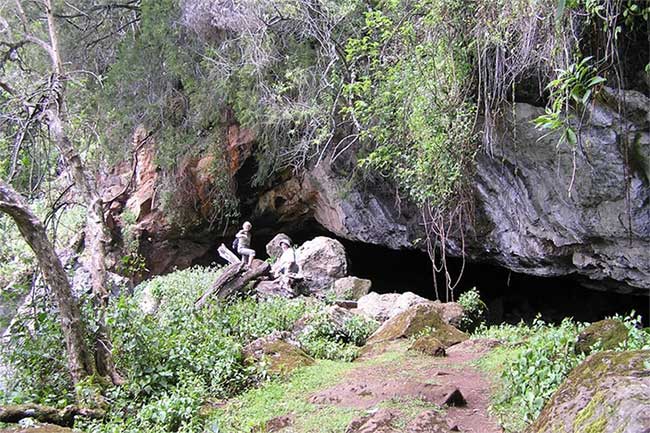Kitum Cave, located in Mount Elgon National Park, Kenya , is a perfect place for wildlife enthusiasts to observe animals up close. However, it is also believed to be the source of the deadly Marburg virus, which leads to the death of infected patients.
Is Kitum Cave home to the world’s most dangerous viruses?
Dubbed one of the five “elephant caves” of Mount Elgon, Kitum Cave extends about 700 feet (about 213 meters) into the mountainside. The cave walls are rich in salt reserves.
Kitum Cave is considered one of the most dangerous caves on the planet due to the presence of the deadly Marburg virus , similar to the Ebola virus. Marburg virus attacks cause dengue fever and other severe symptoms, eventually leading to the death of the infected patient!

Marburg Virus (Marburg Virus Disease – MVD) is an RNA virus belonging to the Filovirus family, the same family as the Ebola virus, a virus transmitted from animals to humans, causing dengue fever and severe bleeding in many parts of the body. can.
Two deaths from Marburg virus disease in the 1980s raised suspicions that Kitum cave was a reservoir for this deadly virus.
The first case was in 1980 when a French engineer working at a sugar factory near the foot of Mount Elgon ventured into Kitum cave. The engineer’s visit to the cave turned into a nightmare when he developed severe symptoms and was hospitalized in Nairobi. In the end, he died.
Another death was recorded in 1987 when a Danish boy explored Kitum Cave during a family vacation. This boy later died from infection with the Ravn virus, a virus closely related to the Marburg virus.
USAMRIID’s terrifying expedition to identify deadly virus vectors
Based on the above cases, the United States Army Research Institute of Infectious Diseases (USAMRIID) organized an expedition there in an effort to identify the virus species believed to reside in Kitum cave.
Scientists suspect that bats residing in the cave may have transmitted the virus to humans. They sampled multiple species, including fruit bats, to determine whether disease vectors were found in these animals. However, no virus causing Marburg disease was found. Therefore, the source of this virus is still a mystery.

The original host of the Marburg virus was the African fruit bat, called Rousettus aegyptiacus. Fruit bats infected with Marburg virus have no obvious signs of disease and are difficult to recognize. But infected primates (including humans) can develop severe symptoms and high mortality rates similar to Ebola.
The best-selling book, “The Hot Zone (1994)” by author Richard Preston describes the true events surrounding the Ebola virus outbreak in the late 1980s. He also provides detailed information about the outbreaks. Other virus outbreaks occurred in Africa in the 1970s and 1980s. His book details the experiences of visitors to Kitum Cave, including his own journey to this life-threatening place.
In 2007, similar expeditions were conducted in mines in Uganda and Gabon when two mine workers contracted the Marburg virus. Firm evidence of a reservoir for Marburg disease virus has been found in fruit bats living in these caves. Interestingly, mines in Uganda have colonies of African fruit bats like those found in Kitum Cave! This suggests that bats and bat guano were indeed the vectors long sought after at Kitum cave. Notably, neither mine worker infected with Marburg virus in 2007 was bitten by any bat. This shows that the virus was spread through inhaling powdered bat droppings!
Discover the truth behind the mysterious markings of Kitum cave
When Kitum Cave was discovered, it had many scratches and grooves along the walls. These marks were originally thought to be the result of ancient Egyptians digging into cave walls in search of gold, diamonds and other precious stones. However, the real reason is something quite unusual.
Every night, hundreds, thousands of wild animals enter the cave to lick the salt deposited on the cave walls. Animals include elephants, buffalos, baboons, leopards, antelopes and hyenas.

When elephants enter a cave, they often bump their heads into each other to find their way in. (Illustration).
When elephants enter a cave, they often bump their heads into each other to find their way in. In addition, they also use their giant tusks to stretch out the cave walls to chew and swallow salt. As a result, over the centuries, scratches and dents appeared on the cave. Ivory traces were also found on the walls of the cave. In fact, the size of the cave has increased significantly over the years due to these elephant activities. Other animals that visit Kitum cave consume salt left by these elephants.
Cave exploration is very dangerous even for the animals that visit this cave. Younger and less experienced elephants may fall into the depths of the cave and this leads to the cave becoming one of the elephant graveyards!
